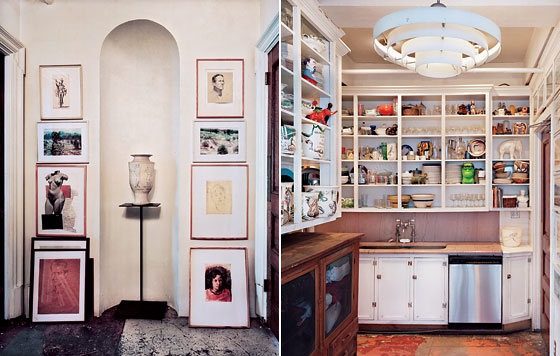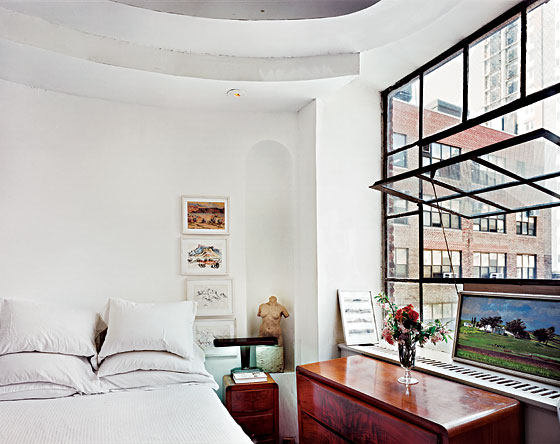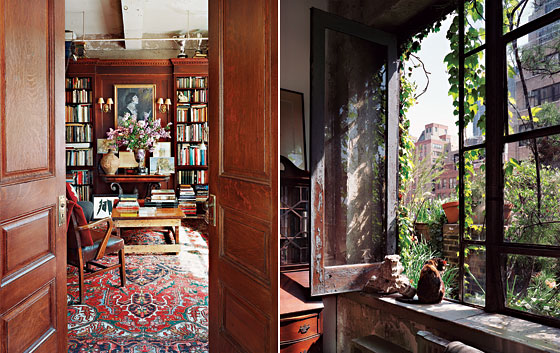
I was desperate for space,” says artist Mark Beard. This was back in the nineties, when Manhattan real estate was still a somewhat realistic venture for a painter-sculptor. He looked at two lofts for sale in his building on West 38th Street. One had “a lot of shag carpeting and platforms; you know, that seventies paneling. Some of the windows were painted over,” says Beard. “It was pretty scary. The broker called it ‘Bamm-Bamm’s cave.’” Beard and his partner have been in the 3,700-square-foot space for fourteen years now, and the shag carpeting has given way to an apartment that includes a sun-drenched studio big enough to hold a life-drawing group, a south-facing terrace overgrown with plants, and a manorial library made (by the artist) using lumber and plywood from Home Depot.
That he can work at home on his monumental canvases is crucial to the prolific Beard, who paints under his own name but also as one of five “characters” he’s invented (he made a mockumentary in which he plays all five, with critics discussing each artist’s work). Right now, Beard (as himself) is working on his largest commission to date: an eleven-story mural for an Abercrombie & Fitch store opening in Tokyo next year (he’s already done pieces for the retailer in New York, Los Angeles, and London). Beard holds the weekly life-drawing group at the studio, which he also uses as a dining room, serving dinner on the painted faux-Baroque table fashioned from plywood and a discarded desk top he found on the street.
Refashioning, disguising, customizing, thrift: Beard excels at all of it, but always with a wink and a sense of theater (he’s done extensive set design and construction). The Home Depot paneling in the library doesn’t reach to the ceiling, so about a foot of the raw industrial walls is clearly visible. “My family has libraries, they always have,” says Beard, who comes from a long line of artists including his great-grandfather, an early Mormon pioneer who emigrated from England to Utah. “Real ones, fancy ones. I wanted this to look like my grandparents’ library. At Home Depot you find plywood covered with luan, which is a sort of mahogany. Then you paint it and sand it. The doors came from a salvage yard in Brooklyn. We sent them out to New Jersey to be stripped, and they came back without hinges. Hardware is expensive!” The library coffee table is the studio’s model stand and has a removable top that makes the table well suited to entertaining at night. “It’s really the sentimental heart of the house,” he says. “I used to sit here when I was a kid.”
“We inherited a lot of mismatched stuff over the years,” Beard adds, looking around at the console table he found on the Bowery, the couch a friend gave him, the $7 sconces found in Chinatown. “I don’t think any object here cost more than $25.”

The Kitchen “Again, all standard lumber from Home Depot. We found the sink at a salvage place. The lamp I found at the flea market.” Photo: David Allee


The Garden (right): Beard chose this apartment over another one in this buiding so he could cultivate flowers and herbs; birds and bees routinely visit. His cat Louise (one of two) soaks up the sun. Photo: David Allee
